BYD Tang vs Ford Explorer EV – Differences & prices compared
Compare performance, boot space, consumption and price in one view.
Find out now: which car is the better choice for you – BYD Tang or Ford Explorer EV?
The BYD Tang (SUV) comes with a Electric engine and Automatic transmission. In comparison, the Ford Explorer EV (SUV) features a Electric engine with Automatic transmission.
When it comes to boot capacity, the BYD Tang offers 235 L, while the Ford Explorer EV provides 450 L – depending on how much space you need. If you’re looking for more power, decide whether the 517 HP of the BYD Tang or the 340 HP of the Ford Explorer EV suits your needs better.
In terms of consumption, the values are 24 kWh per 100 km for the BYD Tang, and 14.50 kWh for the Ford Explorer EV.
Price-wise, the BYD Tang starts at 59700 £, while the Ford Explorer EV is available from 34200 £. Compare all the details and find out which model fits your lifestyle best!
In an exciting head-to-head comparison, the BYD Tang and Ford Explorer EV showcase the evolving landscape of electric SUVs. The BYD Tang impresses with its stylish design and competitive range, appealing to eco-conscious drivers looking for a luxurious yet sustainable option. Meanwhile, the Ford Explorer EV revitalizes a classic nameplate, offering familiar performance and a spacious interior, making it a strong contender for families transitioning to electric mobility.
BYD Tang
The BYD Tang represents a bold entry into the competitive SUV market, blending cutting-edge technology with modern design aesthetics. Its spacious interior is complemented by high-quality materials and innovative features, making it a strong contender for families and tech enthusiasts alike. With an emphasis on sustainability, the Tang offers an eco-friendly driving experience without compromising on performance or luxury.
details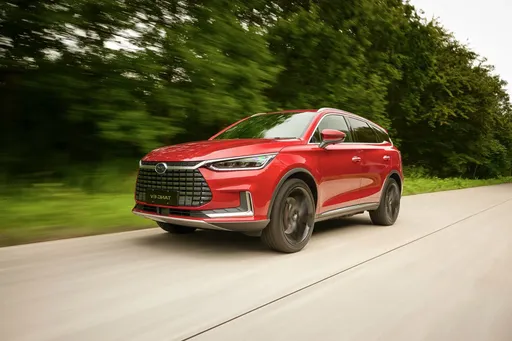 @ press.bydauto.be
@ press.bydauto.be
 @ press.bydauto.be
@ press.bydauto.be
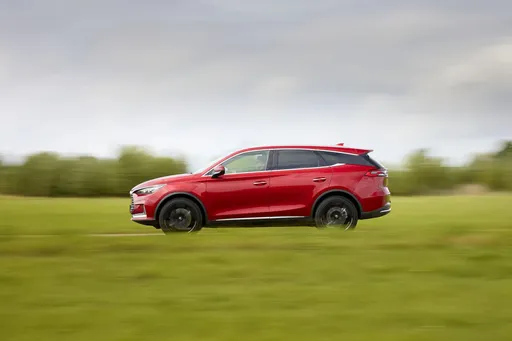 @ press.bydauto.be
@ press.bydauto.be
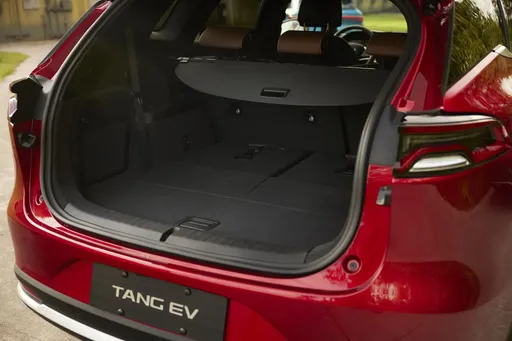 @ press.bydauto.be
@ press.bydauto.be
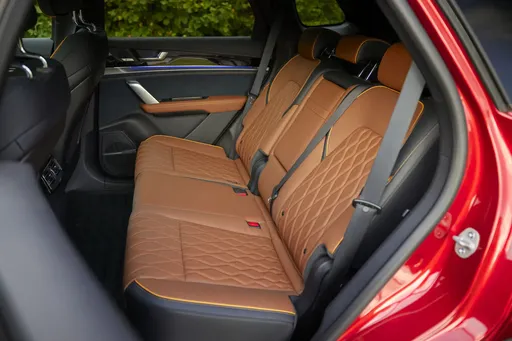 @ press.bydauto.be
@ press.bydauto.be
Ford Explorer EV
The Ford Explorer EV marks a significant step forward in the brand's journey towards electrification, offering an impressive blend of performance and sustainability. This modern SUV features a sleek design complemented by advanced technology that enhances the driving experience. With a focus on comfort and innovation, the Explorer EV aims to redefine family travel for the electric age.
details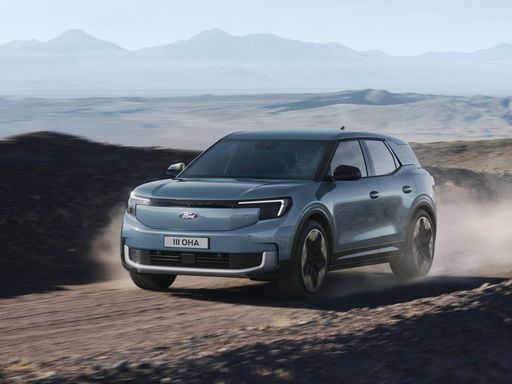 @ electricexplorer.fordpresskits.com
@ electricexplorer.fordpresskits.com
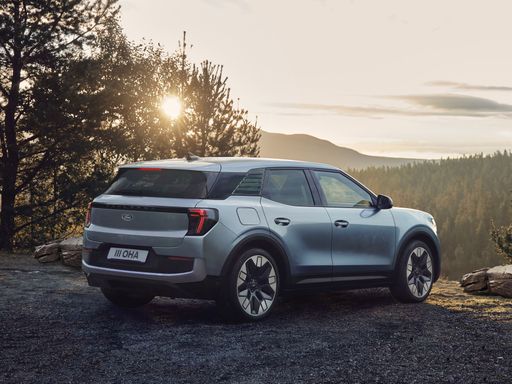 @ electricexplorer.fordpresskits.com
@ electricexplorer.fordpresskits.com
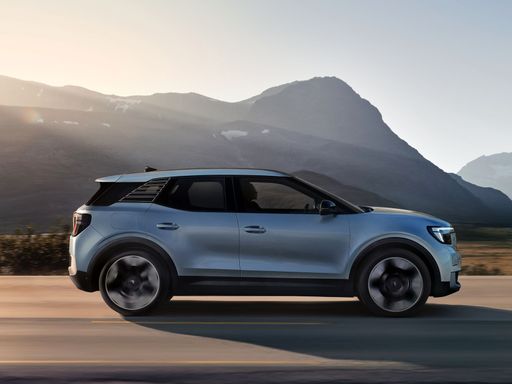 @ electricexplorer.fordpresskits.com
@ electricexplorer.fordpresskits.com
As electric vehicles (EVs) sweep the automotive industry, the competition is fierce among manufacturers vying to capture the hearts of eco-conscious drivers. The BYD Tang and Ford Explorer EV are two standout entries in the SUV segment. This article offers an in-depth comparison of these two models, analyzing their technical specifications and innovative features to help potential buyers make informed decisions.
Power and Performance: A Closer Look
The BYD Tang boasts impressive performance figures, delivering a robust 517 horsepower and a torque of 680 Nm. This allows the Tang to accelerate from 0 to 100 km/h in a mere 4.9 seconds, making it a strong performer in the electric SUV market. Its all-wheel-drive system ensures optimal traction and handling, ideal for both urban streets and more rugged terrains.
In contrast, the Ford Explorer EV offers multiple powertrain options. The strongest variant delivers up to 340 horsepower with a torque of 679 Nm. While it takes about 5.3 seconds to reach 100 km/h, this is commendable for a vehicle weighing around 2,167 kg. The Explorer EV also has the flexibility of both rear-wheel and all-wheel drive, accommodating diverse driving needs.
Range and Efficiency: Staying Ahead of the Curve
One of the biggest considerations for electric vehicle buyers is range. The BYD Tang offers an impressive electric range of 530 km on a full charge, with an energy consumption of 24 kWh per 100 km. In terms of overall efficiency, the Tang stands out but is still somewhat overshadowed by the Explorer EV’s several configurations, which offer ranges up to 602 km, depending on the battery capacity chosen (77 kWh and 79 kWh options available). The Explorer EV consumes between 13.9 to 16.6 kWh/100 km, inching ahead in terms of spacing between efficiency and range.
Interior Space and Comfort: Family-Friendly Solutions
Families will appreciate the spacious interiors of both SUVs, but they offer different seating capacities. The BYD Tang accommodates seven passengers, ideal for larger families or those needing extra space. In terms of trunk capacity, it offers 235 liters, providing decent space for luggage and groceries.
The Ford Explorer EV, while seating five, provides a more generous trunk capacity of up to 450 liters depending on the variant. Although it accommodates fewer passengers, it offers flexibility for storage and luggage, which is essential for daily usage and weekend getaways.
Dimensions: Size Matters
When comparing body dimensions, the BYD Tang measures at 4,970 mm in length, 1,955 mm in width, and 1,745 mm in height. This size contributes to its spacious interior and robust stance on the road.
The Ford Explorer EV, however, is more compact, measuring 4,468 mm in length, 1,871 mm in width, and 1,630 mm in height. This means it may be easier to maneuver in urban settings while still providing a comfortable ride, though it sacrifices a bit of interior space in the process.
Technological Innovations: Features That Impress
Both vehicles come equipped with advanced technological features aimed at enhancing the driving experience. The BYD Tang integrates a user-friendly infotainment system, often paired with an array of safety features including blind-spot monitoring, lane-keeping assist, and advanced adaptive cruise control. These innovations position it as a highly connected vehicle suitable for modern lifestyles.
The Ford Explorer EV is a solid contender as well, boasting Ford's latest SYNC infotainment system, which offers seamless smartphone integration and a suite of safety technologies. In terms of innovation, Ford emphasizes connectivity, with features that cater to users who rely heavily on their devices. The Explorer EV also includes Ford Co-Pilot 360, further enhancing the safety net for its occupants.
Conclusion: Which SUV Reigns Supreme?
The BYD Tang and Ford Explorer EV both present compelling offerings in the electric SUV market. The Tang excels in performance and spaciousness, catering specifically to families seeking a high-performance electric model. On the other hand, the Ford Explorer EV shines with its efficiency, range options, and advanced technology, making it more suitable for drivers prioritizing connectivity and versatility.
Ultimately, the choice between the BYD Tang and Ford Explorer EV will come down to personal preference, driving needs, and lifestyle demands. Whether you prioritize exhilarating performance or cutting-edge technology, both vehicles promise to deliver an excellent driving experience.

|

|
|
|
|
Costs and Consumption |
|
|---|---|
|
Price
59700 £
|
Price
34200 - 48800 £
|
|
Consumption L/100km
-
|
Consumption L/100km
-
|
|
Consumption kWh/100km
24 kWh
|
Consumption kWh/100km
14.5 - 17.2 kWh
|
|
Electric Range
530 km
|
Electric Range
360 - 602 km
|
|
Battery Capacity
-
|
Battery Capacity
52 - 79 kWh
|
|
co2
0 g/km
|
co2
0 g/km
|
|
Fuel tank capacity
-
|
Fuel tank capacity
-
|
Dimensions and Body |
|
|---|---|
|
Body Type
SUV
|
Body Type
SUV
|
|
Seats
7
|
Seats
5
|
|
Doors
5
|
Doors
5
|
|
Curb weight
2630 kg
|
Curb weight
1908 - 2179 kg
|
|
Trunk capacity
235 L
|
Trunk capacity
445 - 450 L
|
|
Length
4970 mm
|
Length
4468 mm
|
|
Width
1955 mm
|
Width
1871 mm
|
|
Height
1745 mm
|
Height
1630 - 1639 mm
|
|
Payload
575 kg
|
Payload
561 - 585 kg
|
Engine and Performance |
|
|---|---|
|
Engine Type
Electric
|
Engine Type
Electric
|
|
Transmission
Automatic
|
Transmission
Automatic
|
|
Transmission Detail
-
|
Transmission Detail
-
|
|
Drive Type
All-Wheel Drive
|
Drive Type
Rear-Wheel Drive, All-Wheel Drive
|
|
Power HP
517 HP
|
Power HP
170 - 340 HP
|
|
Acceleration 0-100km/h
4.90 s
|
Acceleration 0-100km/h
5.3 - 8.7 s
|
|
Max Speed
190 km/h
|
Max Speed
160 - 180 km/h
|
|
Torque
680 Nm
|
Torque
310 - 679 Nm
|
|
Number of Cylinders
-
|
Number of Cylinders
-
|
|
Power kW
380 kW
|
Power kW
125 - 250 kW
|
|
Engine capacity
-
|
Engine capacity
-
|
General |
|
|---|---|
|
Model Year
2024
|
Model Year
2024 - 2025
|
|
CO2 Efficiency Class
A
|
CO2 Efficiency Class
A
|
|
Brand
BYD
|
Brand
Ford
|
BYD Tang
Introducing the BYD Tang: A Leap into the Future
The BYD Tang marks a significant step forward in the automotive industry, blending innovative technology with an eco-friendly ethos. As a fully electric SUV, it represents a sophisticated fusion of power and efficiency.
Revolution in Power: Electrifying Performance
Under the bonnet of the BYD Tang lies a remarkable electric engine, boasting 517 PS (380 kW). This powerhouse delivers an astonishing torque of 680 Nm, enabling it to accelerate from 0 to 100 km/h in just 4.9 seconds. Such figures catapult the Tang into the upper echelons of electric vehicles, making it a thrilling option for those who seek performance without compromising on sustainability.
Efficiency Meets Range: A Sustainable Choice
The Tang’s prowess is not just about speed; it’s also about efficiency. Achieving a consumption rate of 24 kWh/100 km and offering a substantial electric range of 530 km, the BYD Tang ensures that drivers can travel far and wide with confidence. With an unparalleled range in its class, it’s a vehicle designed for both urban commuting and long-distance travel.
Innovative Design: Form Meets Functionality
The BYD Tang’s design does more than just catch the eye. With a length of 4970 mm, a width of 1955 mm, and a height of 1745 mm, it offers a commanding presence on the road. Despite its robust silhouette, the Tang is designed with aerodynamics in mind, ensuring minimal resistance and maximising its driving range.
Driving Comfort: Luxury Redefined
Inside the Tang, luxury is the standard. The spacious interior accommodates up to seven passengers, making it an ideal choice for families. Advanced technological features enhance the driving experience, ensuring comfort and connectivity on every journey.
Environmental Consciousness: Leading the Charge
The BYD Tang shines in terms of sustainability, boasting a CO2 efficiency class of A and producing 0 g/km of CO2 emissions. These credentials not only qualify it as an environmentally friendly option but also as a leader in the transition towards a greener future.
Conclusion: The Future is Electric
The BYD Tang embodies the future of automotive engineering—a future that is clean, efficient, and exciting. Priced at €69,615, it offers a compelling option for those who wish to embrace electric mobility without sacrificing the amenities and performance they’ve grown accustomed to. Whether for city driving or adventurous road trips, the Tang is poised to lead the charge.
Ford Explorer EV
Unveiling the Future: The Ford Explorer EV
The all-new Ford Explorer EV makes a bold statement in the electric vehicle market with its amalgamation of cutting-edge technology, expansive features, and forward-thinking design. As Ford moves towards a more sustainable future, the Explorer EV stands out as a prime example of the brand's commitment to innovation and performance.
Power and Performance
Beneath its stylish exterior, the Ford Explorer EV boasts a powerful electric motor offering a range of power outputs from 170 PS to an impressive 340 PS. The vehicle provides either rear-wheel drive or an advanced all-wheel-drive system that ensures optimal traction and stability under diverse driving conditions. Thanks to its rapid acceleration, the Explorer EV races from 0 to 100 km/h in as little as 5.3 seconds, while maintaining a top speed of 180 km/h across its variants.
Battery Efficiency and Range
A major highlight of the Explorer EV is its varied battery options, which define its 'Standard Range' and 'Extended Range' models. With capacities ranging from 52 kWh to 79 kWh, the EV offers an impressive driving range of up to 602 km on a single charge. The electric consumption holds remarkable efficiency, varying between 13.9 kWh/100km and 16.6 kWh/100km, highlighting Ford’s innovation in energy management.
Interior Comfort and Technology
Inside, the Explorer EV exudes comfort with its high-quality materials and a spacious layout that accommodates up to five passengers. The vehicle is available in several trim levels, including the luxurious 'Premium' and 'Limited Edition', each outfitted with state-of-the-art technology. Drivers benefit from an intuitive infotainment system, comprehensive digital displays, and a variety of connectivity options that make every journey pleasurable and efficient.
Safety and Sustainability
Safety remains a priority for Ford, evident in the Explorer EV's suite of advanced safety features. The vehicle is equipped with cutting-edge driver-assistance technologies that work tirelessly to safeguard passengers with features such as adaptive cruise control and lane-keeping assist. Moreover, as a zero-emission vehicle, it proudly boasts a CO2 efficiency class rating of A, underpinning its eco-friendly credentials and Ford’s commitment to reducing the carbon footprint.
Pricing and Availability
The Ford Explorer EV is set to make waves with its competitive pricing. Starting between €42,500 and €57,200 depending on the trim and features, it offers exceptional value for those looking for a high-performing and sustainable SUV. The 2024 model is now available for order and promises to redefine expectations in the electric SUV segment.
Final Thoughts
The Ford Explorer EV embodies a harmonious blend of style, efficiency, and technological innovation. As a harbinger of Ford's electric future, it promises not just to meet but exceed the expectations of modern consumers by delivering an exceptional driving experience that is both versatile and responsible.
Which drive types are available for the BYD Tang?
Available as All-Wheel Drive.
The prices and data displayed are estimates based on German list prices and may vary by country. This information is not legally binding.
